When to dig up gladioli and how to store them?
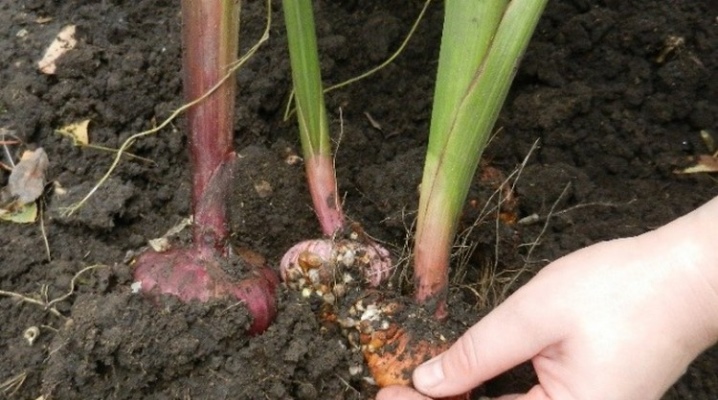
Gladioli literally captivate everyone who looks at them. But these flowers need proper care. And most of all, perhaps, the questions are caused by the seasonal digging of this culture.
Why dig it up?
Gladioli should be removed from open ground for the winter for several good reasons. The first of these is the susceptibility of these plants to frost. Hypothermia is extremely dangerous for them. It is highly likely that even outwardly well-wintered specimens will not bloom in the spring.
The gladioli harvested in autumn, if stored correctly, will not be attacked by pests and dangerous diseases. Moreover, those who every year necessarily remove gladioli will be able to select the strongest and hardiest specimens among them. This property is very important for the subsequent cultivation of the culture.
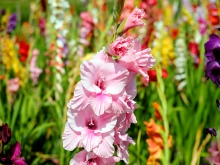
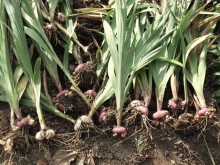
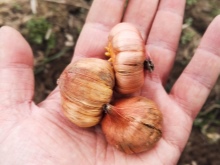
But the planting material of gladioli is very susceptible to all kinds of flower diseases. Pathological fungi especially often affect him. Even a carefully organized wintering does not exclude the danger of infection. If gladioli are infected, they will either not germinate, or they will germinate but not bloom. Danger can only be prevented by digging and then sorting.
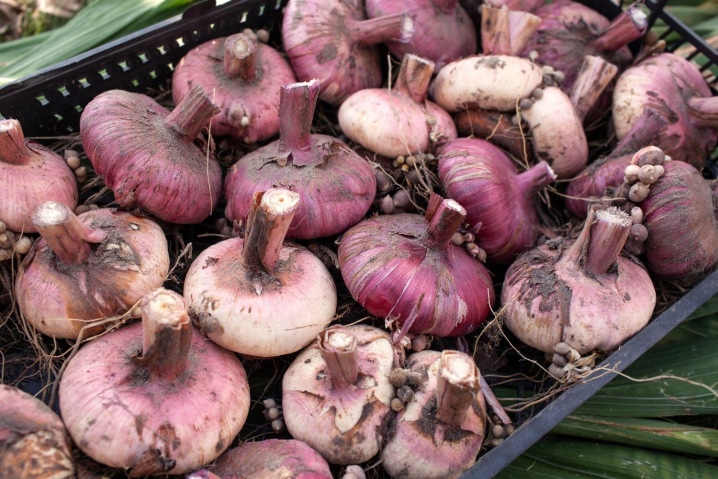
Optimal timing
Experts point out that The best time to dig up gladioli (or rather, their bulbs) is the month after flowering. Late varieties are sometimes dug up much earlier or later. But it is not recommended to deviate much from the standard deadline in any case. The maximum digging time is until the cold comes (less than +10 degrees). With the correct execution of the work and meeting the deadlines for the next season, you can enjoy the beautiful appearance of the flowers.
In the middle zone of the Russian Federation, the optimal time for digging gladioli usually falls on the first month of autumn. This is usually the middle and second half of September.
Important: if the flowers were cut by the beginning of September, then the optimal time will move to mid-October. But the region where the plants are grown also affects the specific period. In the Moscow region, it is best to do this work in mid-September.

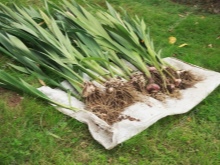

However, you still must not forget that after digging, the onion will have to ripen for about 30 days. Due to the harsh climate, more stringent requirements are made by gladioli in Siberia. The standard recommendation to wait 30-50 days after flowering can be very bad. Even a short night frost is enough for the gorgeous flowers to be irreparably damaged. You have to rely on horticultural intuition and experience.
Sometimes only after digging it becomes clear that the bulbs are damaged by frost.
The earlier the variety, the sooner it will be necessary to dig out the planting material for the next year. Last but not least, they work with plants grown from children. The working conditions in the Urals are about the same. You will have to constantly monitor the weather, because it can present many unpleasant surprises.
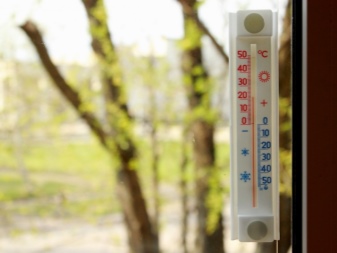
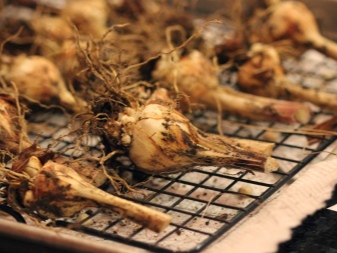
How to dig it right?
Don't think that it's all about meeting deadlines. Harvesting tubers and gladiolus babies requires knowledge of work technology. Experts and agronomists advise to wait for warm sunny weather. The higher the air temperature and the longer the daylight hours, the less the harvested bulbs will have to be dried. You can dig not only with bayonet shovels, but also with a pitchfork.They begin with a deviation from the stem by at least 0.2 m.At the desired point, the forks or bayonet of the shovel are thrust vertically into the ground.
With careful, unsharp movements of the instrument (when it seems to swing), the lump with the roots is lifted. Important: it is advisable to lay it out on a tarp laid out in advance. They lay the lump carefully, it is absolutely not necessary to break it. The bushes are gradually and methodically dug in around the circle. Recommendation: instead of a shovel, a couple of garden scoops are sometimes used, and, judging by the reviews, with them it turns out to collect tubers much faster and more pleasant.
But one cannot be limited to just earthwork. If the gladiolus is dug up, all remaining ground parts are simply cut off. The closer the stem is cut to the bulb, the better. Sometimes they try to separate the new tuber from the original one; however, some experts believe that it is more correct to do this after drying.
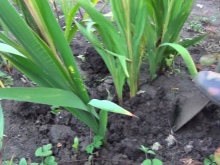
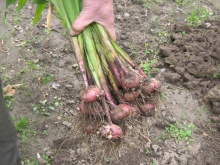
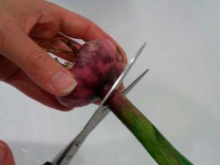
Preparing the bulbs for storage
Treatment against diseases and pests
It makes sense to do something with the bulbs of gladioli only when the soil adhering to the roots dries out at least a little. Therefore, the first 10-30 minutes you can relax or do other things. The dried earth is shaken off by hand. Only after that, the stuck together bulbs are separated and the children are laid separately. Cutting the stems is done at a level of 0.05 m above the bulb.
Diseased and simply too old tubers are disposed of. So that gladioli do not get sick in the future, they must be treated with Fitosporin solution. From available tools, a solution of salt and soda is recommended (0.15 kg and 0.15 kg per 10 liters of clean water). Only properly pickled tubers can be sorted and dried.

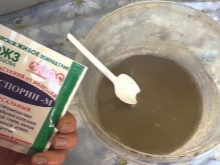
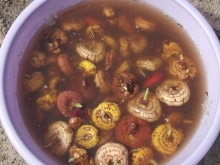
For an additional effect, after the main drying, the material is soaked in a solution of "Fundazol" (0.1%) and potassium permanganate (0.3%).
These two processing methods do not replace each other, but are applied sequentially. The holding time in each of the solutions is at least 30 minutes. Some gardeners recommend to additionally process the planting material with very heavily diluted "Karbofos". This provides an additional guarantee of protection against disease. But no matter how many treatments have been done, 2 or 3, additional drying is always required before storing.
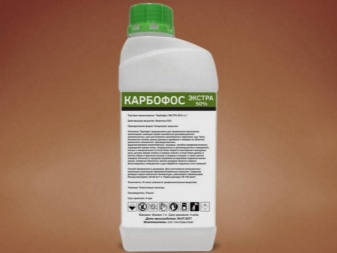

Drying
It is better to dry the planting material of gladioli in boxes in which holes are made. These boxes are placed in a warm place where it will be guaranteed dry. It is very important that the air temperature does not drop below 24 degrees. The total drying time is up to 40-45 days. Then they remove:
- "Kids";
- old bulbs;
- whatever is left of the roots and stems.
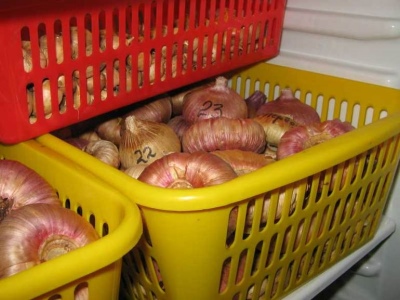
How to save?
All agronomists and gardeners agree that corms should store in cool and dry conditions. Ordinary cellars without proper waterproofing are not suitable for this purpose. And even in a well-prepared basement, it would be worth constantly monitoring the dryness of the environment and the safety of the planting material itself.
To combat pests, it is advised to put garlic near the bulbs. Factory drugs can also help in this matter. Most often, "Inta-Vir" is used. 1 tablet is consumed per 10 liters of water. It takes about 30 minutes to process planting bulbs in it. Then they are dried again.
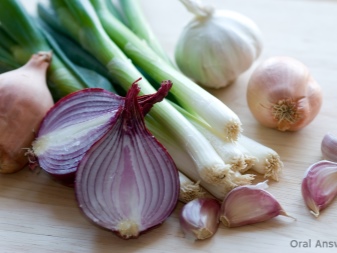

You can remove the material to a place where the following conditions are provided:
- stable air temperature not lower than 4 and not higher than 7 degrees;
- relative humidity from 65 to 75%;
- complete darkening (even a slight backlight will provoke the germination of corms);
- systematic ventilation of the room.
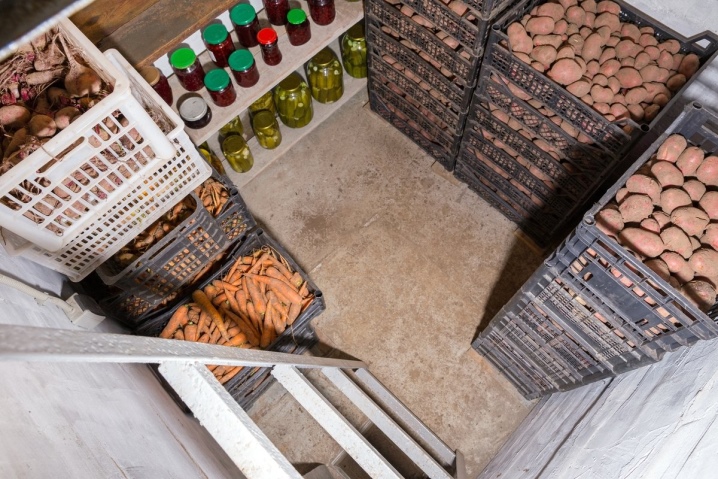
Care before planting in the spring means, first of all, regular inspection of each specimen. Even with careful etching, the risk of infection by pests or diseases cannot be completely ruled out. All damaged bulbs must be immediately destroyed and the place where they are stored must be disinfected. Careful adherence to all recommendations will allow you to save the precious flower for the next year. Blooming will not lose its splendor and beauty.
Problems arise for those people who cannot use the cellars or basements. An excellent solution is to store the bulbs in the ground. Note that this method automatically protects the planting material from sunlight. Some people store bulbs in the refrigerator or on the balcony.
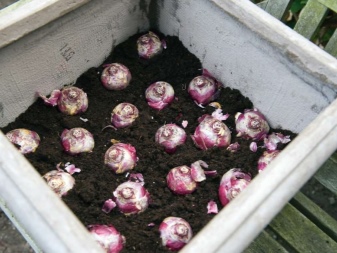
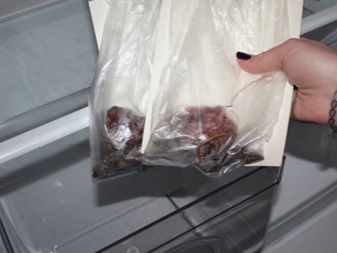
Storage containers also deserve attention. In this capacity, come in handy:
- polyethylene bags;
- nylon tights;
- old newspapers;
- paper bags;
- boxes made of wood.

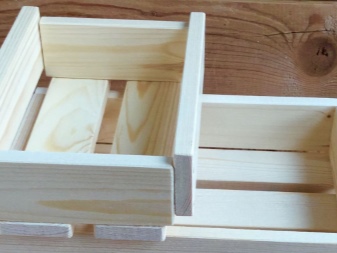
Regardless of how they are stored, the bulbs need ventilation. Without access to air, they are affected by a fungus or completely rot. Original ways to preserve gladioli corms for the winter are:
- placing them in the stairwell or on the lower landing under the stairs;
- in the bathroom near cold water pipes;
- between old wooden frames;
- in an unheated insulated pantry.
But all of these options have a number of disadvantages. So, putting the planting material on the stairs or in another place of the entrance, it is easy to face its theft. In the bathroom near the pipes, the bulbs will have to be protected from moisture, and seriously protected - so that even a pipe break does not wet them.
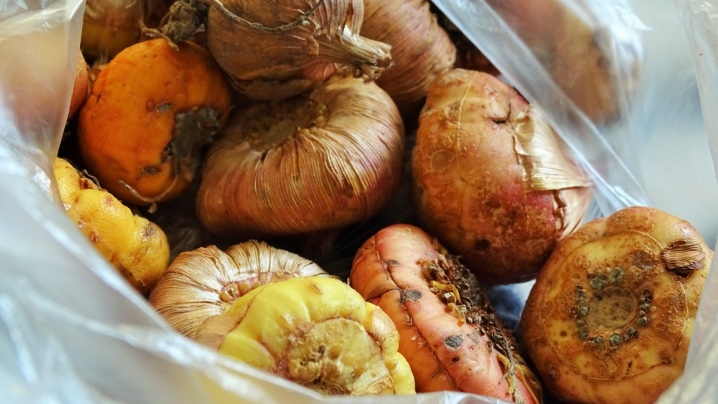
Obviously, this method is unsuitable if the hot and cold pipelines are laid side by side. Old wooden frames have almost everywhere been replaced with "plastic". And unheated closets are too capricious in terms of maintaining the temperature there.
Wherever it is decided to store the planting material of gladioli, it is necessary to carefully check that all the necessary parameters are supported there.
Loggia (closed balcony) is best suited for this. But if the temperature there drops below the permissible level, you will need to wrap boxes or other containers in protective agricultural material. You can also use a regular blanket. In any case, temperature control will be one of the main concerns of the grower.

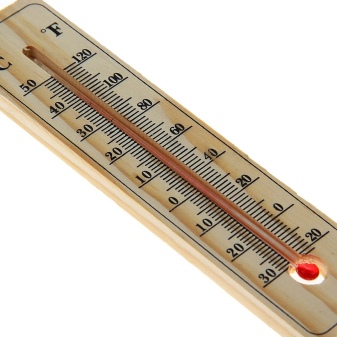
On balconies and loggias, it is advised to place corms in foam boxes. Holes are made in the container for air access. Balconies and loggias are advised to be equipped with stationary thermometers. With the onset of severe cold weather, the insulation of planting material is important even on insulated loggias. There are no less subtleties when storing tubers in cellars and basements. They should be kept away from vegetables and fruits.
Ideally, it's best to avoid placing them in the same room altogether. A lot of moisture evaporates from vegetables, including root crops, during storage. Delicate gladiolus bulbs can suffer from this. The ideal packaging is one with a mesh bottom.
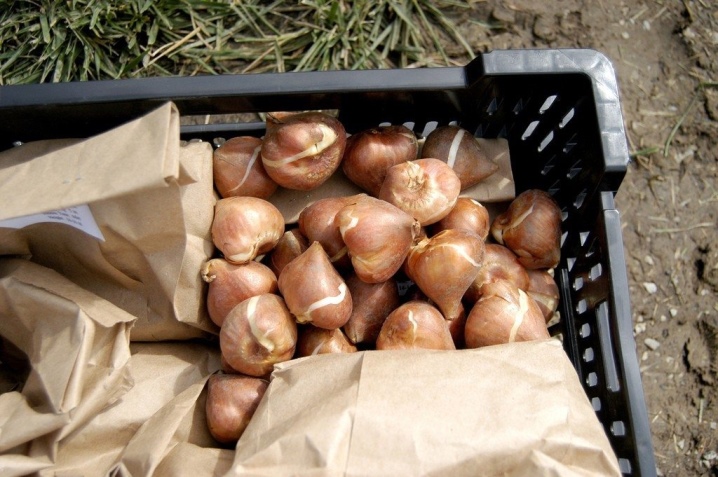
It is not advisable to place boxes directly on the floor. It is much more correct to place them on the shelves of the rack. This will reliably protect the planting material from moisture. You can bury the corms in the sand. Then, by the beginning of spring, they will be covered with "children", and there will be enough planting material for sure. True, in the first year, the children will not give flowers, and in addition to them, ordinary tubers will have to be preserved.
In urban conditions, it is very often necessary to store planting material in the refrigerator. This option will only work for a small number of bulbs. Taking into account the likely humidity in the refrigerator, all copies are wrapped in paper. Place such blanks only on the lower shelves. In the last days of February or at the beginning of March, the absorption of moisture by future gladioli reaches a maximum. Therefore, at this time they must be removed, dried and wrapped in fresh paper. The workpieces are again placed on the shelves with a low, but not negative temperature.
If the planting material freezes after that, it will not give 100% color. However, it is more common to store bulbs outside the refrigerator. It allows for greater control over the conditions of their stay.
In the vast majority of cases, planting material is placed in boxes. They are usually made of wood, since the gaps between the boards provide moisture protection and ventilation at the same time. Special plastic containers for vegetables can be considered a good alternative.
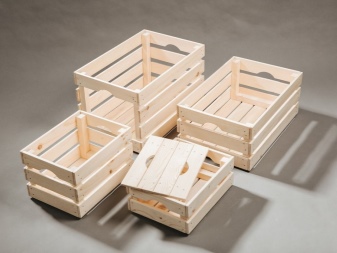
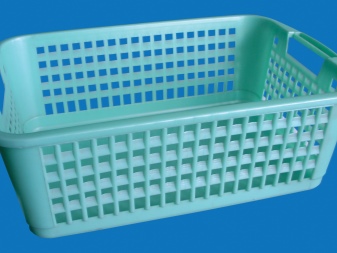
If the room where it is decided to store the tubers is dry enough and equipped with decent ventilation, additional wrapping with paper or plastic is not required. In each box, blanks are put only for one grade, and a piece of paper with the corresponding inscription is glued onto transparent tape.
If there is no basement, you can use nylon tights or stockings. You will have to carefully select the bulbs. Indeed, in this case, one infected specimen is enough for the infection to affect all the seedlings in contact with it. During storage, it is advisable to check the safety of the tubers at least twice. Those that soften or harden beyond measure must be removed immediately - they are no longer suitable for disembarkation.
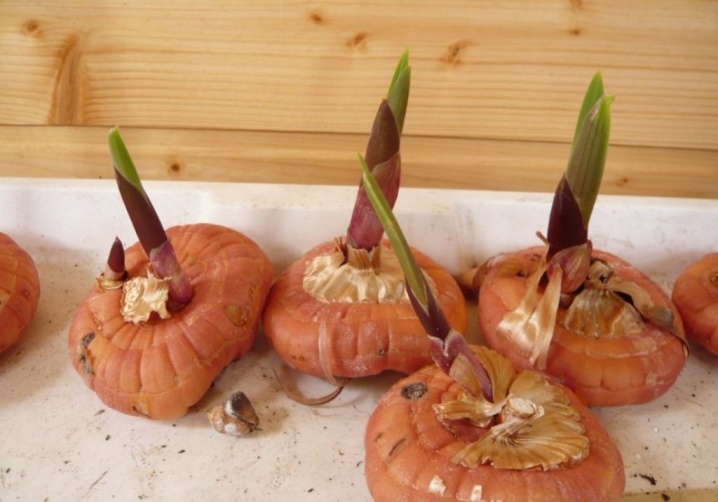
You can bury the bulbs in the ground in places with a mild climate and shallow freezing. Groundwater should be as deep as possible. They dig a ditch 0.8 m deep and 0.7 m wide. Planting blanks are transferred to wooden boxes. They are sprinkled with sawdust or calcined sand.
After installing the box in the trench, sprinkle it with leaves. Polyethylene is pulled over them to save future gladioli from precipitation. Such a trench filling can be buried until spring. But one must be firmly convinced that the winter will not be too cold. So this method is still quite risky.
For information on how to properly dig the onions of gladioli and save them, see below.







































































































The comment was sent successfully.